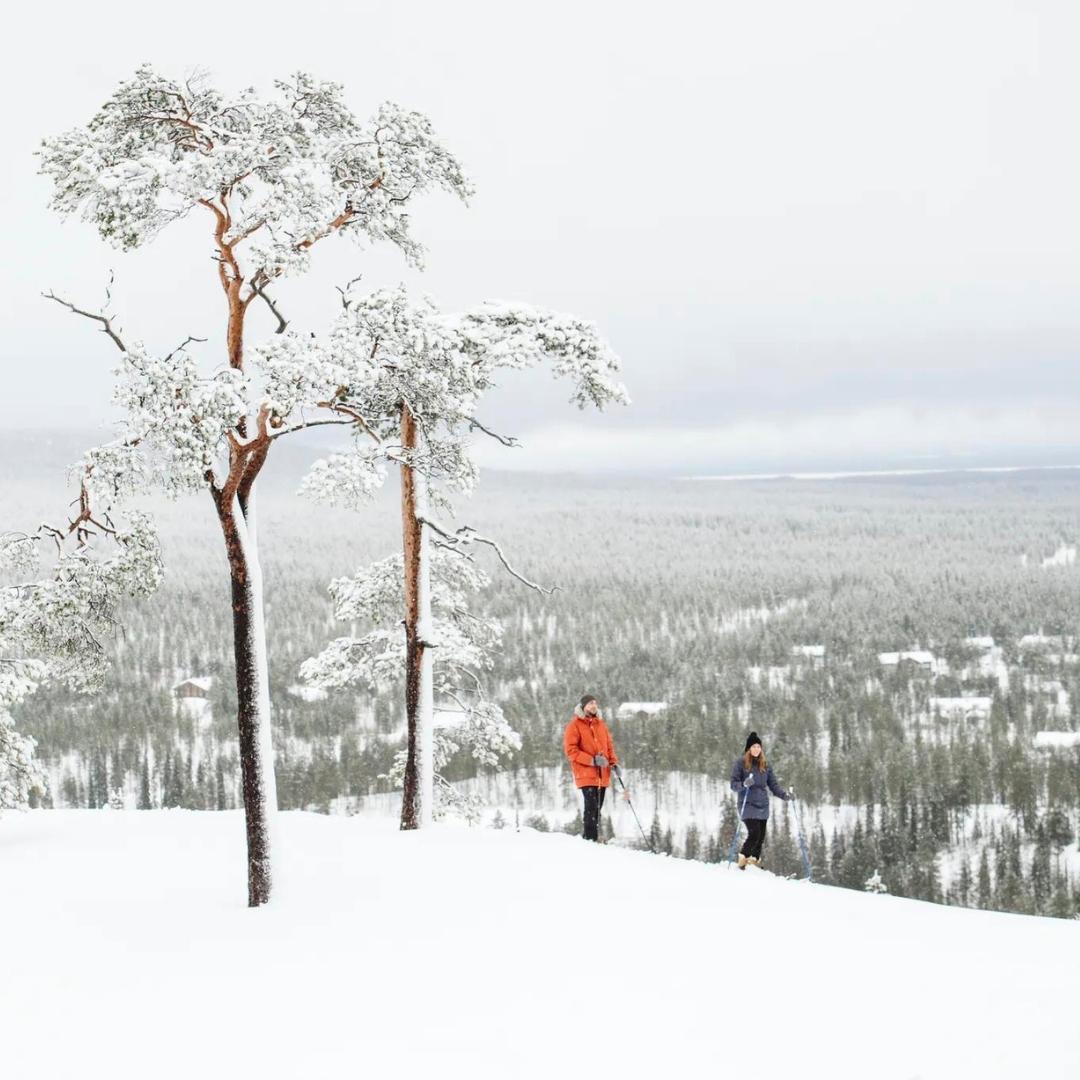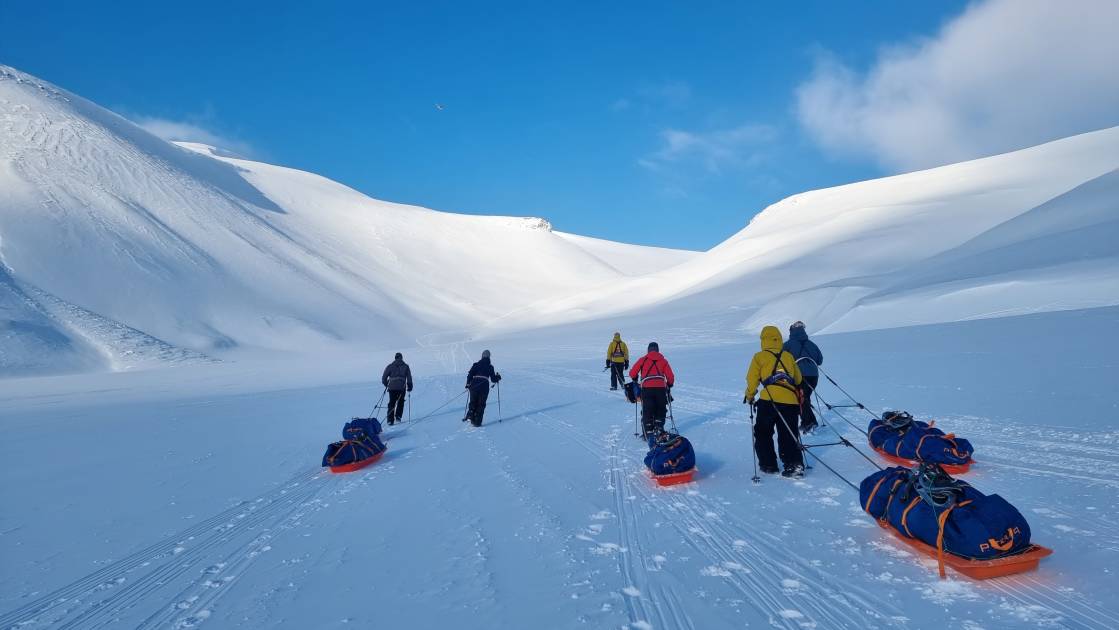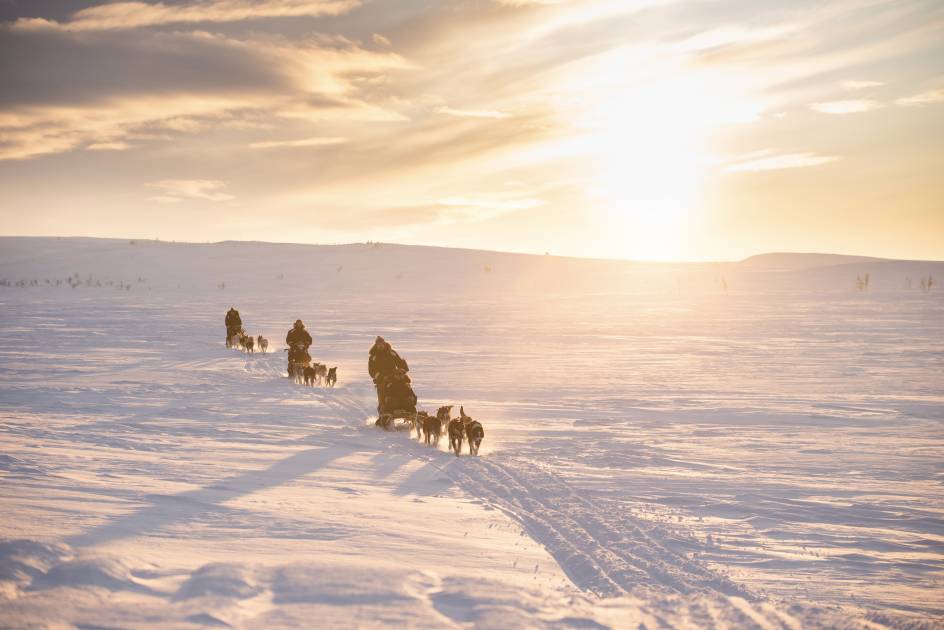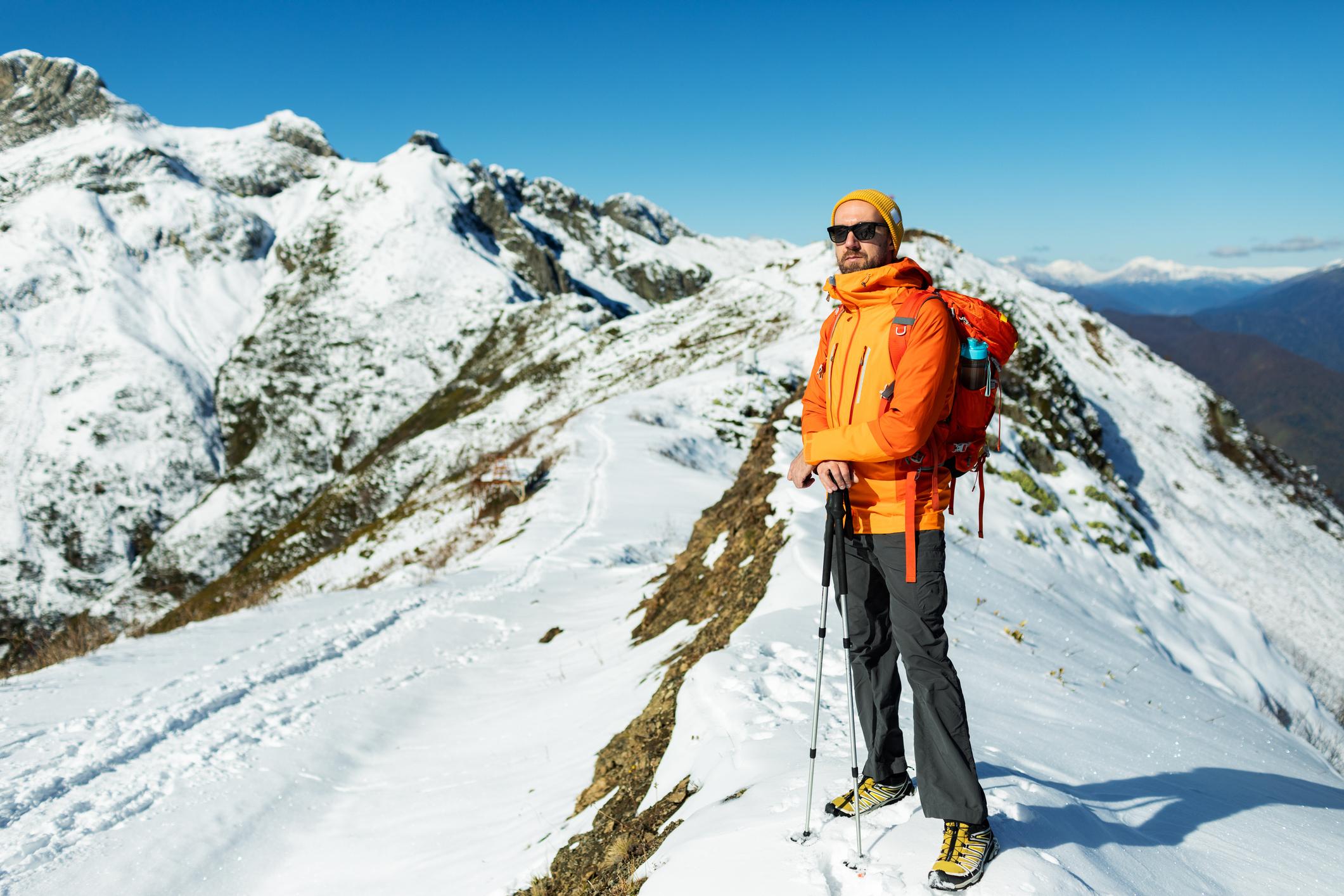I’m not sure who needs to hear this, but you don’t need to know the Wim Hof Method in order to avoid getting cold while you’re hiking this winter. Even if you’re deep in the Arctic and it’s -30°C outside. Just because you are somewhere very cold, does not mean you should be very cold.
But your treasured quarter-zip, while wonderful, is going to need some help.
Simply rising and grinding will not make your body warm. Neither will an Apple watch or thinking about the Roman Empire. Three months of drinking creatine and eating broccoli might make you strong, but it is not a fleece. The Rest Is Politics podcast will not stop you getting cold while ice climbing. Know that I speak with love when I say this: you do not need to suffer when you’re on an adventure in a freezing location, however cold. You just need to layer properly.
There may be some discomfort, but you don’t have to suffer. I’m out guiding in Svalbard for seven months a year and I’m not suffering every day. It should be enjoyable.
Whenever winter arrives each year, I always remember an enlightening chat I had with an Italian mountain guide called Mirko Chiappini back in 2022. Mirko lives in Svalbard and leads expedition groups through the winter.
“There is a world of difference between -10°C and -20°C,” he told me. “But we know how to deal with it. We are professionals. We know how to read people and we can usually tell if you’re cold or not, and give quick feedback.”

So far, so obvious, right? But it’s this next bit which has always stuck with me.
“We experience a lot more problems with ‘tough guys’ than with beginners”, Mirko explained, “because a tough guy doesn’t tell you what’s happening - they hide their feelings and their emotions, so if they have a problem, it tends to get worse. Beginners tell us, and then it’s very easy for us to help them adjust to whatever the issue might be. Tough guys are more difficult.”
This is unsurprising when you hear it. I am not big, nor tough, but I am a man, and it is well documented that many men struggle to make themselves vulnerable or ask other people for help - but it hadn't crossed my mind before.

There is a timeless trend within mountaineering literature that springs to mind.
Whereas books written by outdoors-y women tend to focus on the nature and cultures they are travelling through, similar books written by men tend to be slightly more egotistical; focusing on individual battles, resilience and record-breaking achievements. This is a sweeping generalisation with many exceptions, of course, and it is more true of historical works, but there’s still an element of it around today - as evidenced by the plethora of books by beard-y, SAS, Commando types that come out each Christmas.
If you look at the Inuits in Greenland, you never see them run. It's printed into their genes that if we run we sweat, and if we sweat, we get cold.
I bring this up because such literature has perhaps built a narrative which tells people, or in particular, men, that when they are outdoors, and when they’re on an expedition, they should be prepared to suffer. That it will be (even should be) gruelling. Of course, sometimes it will be tough. Resilience, and the right mindset, is undoubtedly important when you’re taking on a physical challenge in tough conditions, but preparation is much more important. If you’ve done the training, and bought the right kit, then there’s no reason for you to be in distress when you’re exploring a freezing cold, beautiful location.

“Many people expect Svalbard to be tough, so they think it’s normal to suffer,” says Mirko. “Of course, there may be some discomfort, but you don’t have to suffer. I’m out guiding in Svalbard for seven months a year and I’m not suffering every day. It should be enjoyable.”

That’s the key, really: you’re not more masculine if you don’t ask your guide for tips when you’re cold. You’re just going to get colder.
Your guides are trained experts, so ask them every question that comes to mind. I love pestering them with queries about flora and fauna, local folklore or asking about their tips for hiking snacks or what their favourite bits of gear are. You can then take those tips away and apply them to future solo adventures.
The layering principle is simply that you should have the right amount of clothes on you for whatever you need to be doing. Not more and not less.
I’m not saying that you need to tell your guide about the way you were moved the first time you saw the ocean - but they’re there for a reason, and that is because they know how to keep you safe and happy in the outdoors. Help them do exactly that.
Okay fine, so how do I layer properly?
Thomas Ohlander is another winter guide, who has extensive experience guiding at -20°C in Arctic Sweden. I asked him to spell out the obvious about layering a couple of years ago.
“The layering principle is simply that you should have the right amount of clothes on you for whatever you need to be doing,” says Thomas. “Not more and not less. So if you’re cold, put an extra layer on - don't start with a lot of layers on, because then you start to sweat. If you’re cold, you’re probably wet with sweat, and you need to get that condensation out. The key ingredient in staying warm is not to get wet. If you look at the Inuits in Greenland, you never see them run. It's printed into their genes that if we run we sweat, and if we sweat, we get cold.”

If you are out on a winter adventure, and you are too hot at -10°C, then odds are that you should still take off a layer, despite the cold, before you get all sweaty.
Expeditions where you're pulling sleds or hiking up steep mountains in the cold can be challenging, but outdoor gear has now reached a point where the conditions (with some mitigating circumstances) should no longer be a significant stress on you during your adventure. You just to pay attention to them.

What layers you should wear depends on where you are going, but it will often be: waterproof trousers, base thermals, a fleece, waterproof jacket and a hat. Don’t put on more than one pair of tight socks or you could cut your circulation off - but do bring a pair of finger gloves for underneath your windproof gloves or mittens.
Be prepared (and willing!) to adjust your layers regularly. Take a layer off if you’re warm and going uphill. If you stop for a cup of tea, put your layers back on.
Now, a quick note about materials.
“For the base layer, we use wool,” says Maiko, of his choice on Svalbard. “No cotton! And the same goes for socks. When cotton gets wet, you lose all of the insulating properties. It’s wool, wool, wool. And it's very important that if you’re going to buy clothes, they need to be loose. If you buy clothes, buy roomy clothes. Loose is good, tight is bad. For shoes and everything else.”
Be prepared (and willing!) to adjust your layers regularly. Take a layer off if you’re too warm and going uphill. If you stop for a cup of tea, put that layer back on. Make that active choice and don’t be lazy. Make things easier for yourself by keeping the kit that you’re likely to be taking off and putting back on quite regularly - the likes of gloves, buff, balaclava, hat - easily accessible in your pack.
And look, you can still pretend to be Ernest Shackleton while you’re out in the snow, but you shouldn't have to hunt seals or draw straws to see who gets a sleeping bag on an adventure you booked for fun. Tell your guides if you’re cold, or if you have any questions over your kit or concerns about the adventure, because they've heard it all before. They can help you keep warm and happy.
Inspired? Check out our full range of winter adventure holidays now!


